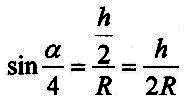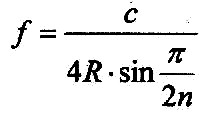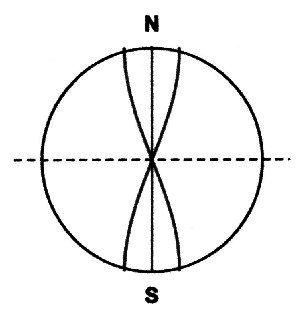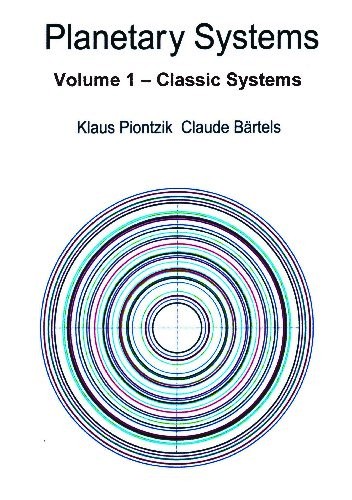| Copyright © Klaus Piontzik | ||
| German Version |
| Now the previous considerations allow a first calculation of a wave that builds up, as the earth, around a sphere. Still, it must be considered that the wave propagation takes place linear and not along the curved surface of the ball. |
 |
After the Huygens-Fresnel
principle the points A,
B, C serve so as source points of the standing wave (blue) Electromagnetic waves propagate spherically from one point. (red) If point B is the starting point so the distance BDC = h is the way of the wave. |
| Illustration 2.4.1 – wave propagation |
| Because there is a stationary state, it is sufficient to look at the way of the wave from one source to the next source. |
| This makes |  |
| The triangle of MCD in the picture 2.4.1 is rectangular in the point D and apply: |
 |
|
| Shift the equation to h: |
 |
| Since now all sizes are known, the wavelength can be determined: |
| 2.4.1 - Equation: |  |
| In the equation is R
the radius of the Earth, n is the number
of waves. This results in the frequency equation for basic oscillations |
| 2.4.2 - Equation: |  |
n = 1,2,3,4,... |
| The basic frequency is for n = 1: |
2.4.3 -
Equation:  |
 |
| Illustration 2.4.2 – basic oscillation |
| This is also the oscillation of a bar with free ends, which length is equal to the diameter of the ball. |

|
200 sides, 23 of them in color 154 pictures 38 tables Production und Publishing: ISBN 978-3-7357-3854-7 Price: 25 Euro |